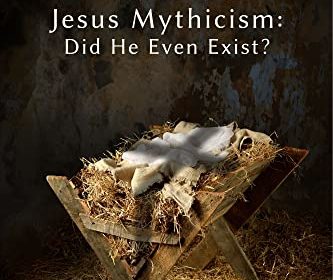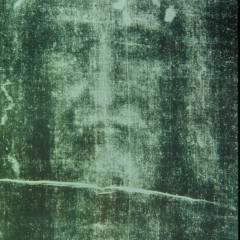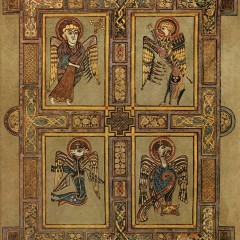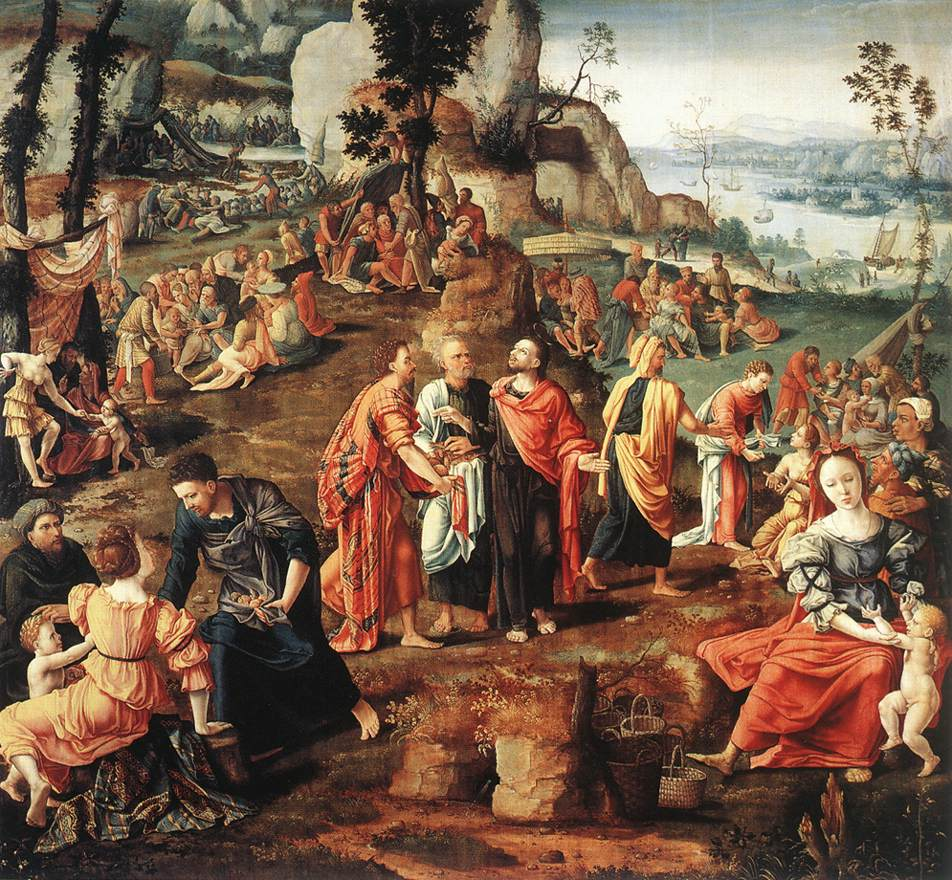Brodie’s Mythicist Case: The Facts (by Neil Godfrey)
Thomas Brodie argues that the Gospel accounts of Jesus, both his deeds and teachings, are like other literature of the era insofar as they are creative re-writings of earlier literary sources. The best known example of such creative imitation in the classical world is Virgil’s use of Homer’s epics to create the Aeneid. What is less well known is how pervasive this sort of literary imitation (and creative emulation) was in the Hellenistic and Roman worlds. Many scholars have pinpointed isolated passage in the Gospels that appear to be derived from other literature (e.g. Jesus raising the daughter of Jairus is very like similar miracles by Elijah and Elisha) but Brodie goes well beyond these arguments and into a quite different dimension of literary analysis, as I will explain below. He also argues that the hypothesis that the Gospels are derived from oral traditions is flawed for many reasons. No-one who has read Thomas Brodie’s Beyond the Quest for the Historical Jesus: Memoir of a Discovery can can ever legitimately accuse Brodie of resorting to “extreme parallelomania” in order to argue his case. Indeed, scholars as reputable as Charles H. Talbert and Wilfrid Cantrell Smith found Brodie’s thesis to be worthy of wider serious consideration. Anyone who dismisses his arguments as even at times stooping to superficial dot-point comparisons of prepositions was never paying attention to what they claim they read. (I have suppressed the name of the prime culprit in order to protect the guilty.) In Chapter 7 of Beyond the Quest Brodie gives a 26 page detailed explanation of what is involved in identifying the source of Luke 9:57-62 in 1 Kings 19. Six of those 26 pages set out in small font the relevant Greek texts and translations side by side. This is the sort of detail that Brodie explains he did not have space to include in his 2004 tome (680+ pages) identifying the sources of New Testament writings, The Birthing of the New Testament. But of those 680+ pages Brodie only gave a 6 page explanation of how those six verses are derived from 1 Kings 19. In Beyond the Quest we are treated to the full course banquet. Getting Inside What Is Happening Studies of how ancient writers adapted or transformed older texts, especially of how the New Testament used the Old Testament, are now becoming commonplace, but it is useful to look at an example closely because the transforming process can seem strange. (Beyond, p. 51) Is Brodie suggesting that a simplistic spotting of supposedly parallel words (even prepositions) is becoming commonplace in the academy? If so, what can he possibly mean by a “transforming process”? What is it about supposed ancient literary...
Magical Earthquake Ray Beams Caused the Shroud of Turin (by Richard Carrier)
Oh, yeah, baby. Someone pointed out to me in a comment on another post that people are circulating a story now that some Italian scientists have “proved” that the Shroud of Turin is authentic because its carbon date was altered by neutron radiation from a giant earthquake in Judea in exactly 33 A.D. (which they also know to have been exactly 8.2 on the Richter scale, thanks to, uh, ancient Roman seismometers or something). This claim even appears, without any skepticism, at Science Daily. And somehow, upending the whole world order, the duly skeptical report on this tale comes from Fox News! The original study claiming these absurd things is A. Carpinteri, G. Lacidogna, and O. Borla, Is the Shroud of Turin in Relation to the Old Jerusalem Historical Earthquake? Meccanica (February 2014). That is either a joke article, or these Italians at the Politecnico di Torino are some of the goofiest cranks in human history (it appears to be the latter, but it’s hard to tell–if this is a Poe, it’s pretty good; whereas the paper’s lead author appears to be an established crank). Not only is the science massively implausible (the effect would have been observed for all objects in earthquakes, then and now, as aptly pointed out by numerous scientists) but it also gets the history wrong: a previous geology report confirmed a large earthquake there for the 30s BC, not AD. The geological evidence of seismic activity for the 30s was of events so small as to have had no significant effects (and no earthquake is recorded for that region in the historical record at all–apart, of course, from one single document: the Gospel of Matthew…right…I’ll comment more on this in a moment, but see also my peer reviewed paper on Thallus, reproduced in Hitler Homer Bible Christ, cf. p. 328, n. 3 and 329, n. 5). The geological evidence is presented in Jefferson B. Williams, Markus J. Schwab and A. Brauer, An Early First-Century Earthquake in the Dead Sea, International Geology Review 54.10 (May 2012), pp. 1219-28. The comments of scientists on this claim from Italy are particularly amusing. Because they reek of “duh.” From the Fox News report (emphasis mine)… Even if it is theoretically possible for earthquake-generated neutrons to have caused this kind of reaction, the study doesn’t address why this effect hasn’t been seen elsewhere in the archaeological record, Gordon Cook, a professor of environmental geochemistry at the University of Glasgow, explained. “It would have to be a really local effect not to be measurable elsewhere,” Cook told Live Science. “People have been measuring materials of that age for decades...
R. Joseph Hoffmann and friends on a rescue mission for the “Jesus of history” (by Kenneth Humphreys)
A trio of Jesus myth denouncers from the world of academe have rushed into the breach opened up by the failure of Bart Ehrman’s final solution to the problem of Jesus’ existence (Listen, he was a small-time deluded doom merchant who thought he was king, so there). Professors Hoffmann and Casey, and a young academic who worked for Casey, Stephanie Louise Fisher, have come to Ehrman’s support with a few dubious arguments in favour of a historical Jesus and a visceral attack on Jesus mythicists as a thoroughly bad crew. The blogosphere has been enlivened by a potpourri of ego wars, withering sarcasm, aspersions about competence, intellect, comprehension, and honesty. The mythicist who has drawn most of the ire is Richard Carrier, a scholar whose scholarly prowess is matched by an equally impressive opinion of himself. But what of the “historical Jesus”? Has the posse that has rushed to Ehrman’s side got a leg to stand on? For what it is worth, Hoffmann posted online three essays in what he called “The Jesus Process” on his blog, The New Oxonian. Alarm bells ring in the ivory towers Increasing numbers of web-savvy enquirers are asking, “What real evidence is there for a historical Jesus?” and are not convinced by the replies. The result is that a paradigm shift is in progress. The mythic Jesus, an idea largely ignored in the 20th century by the vested interests of religion and conservative scholarship, has argued its way back onto the agenda, if only to compel the mandarins to issue contemptuous rebuttals. Yet whisper-thin defences of a historical Jesus do not cut it in the internet-enabled world – and established academics don’t like that one little bit. The on-line arena can be rude and crude but, as with the printing press six hundred years ago, the power of a cartel has been broken. For some tastes, the wrong kind of people have gained an audience. “One of the most remarkable features of public discussion of Jesus of Nazareth in the twenty-first century has been a massive upsurge in the view that this important historical figure did not even exist.” – Maurice Casey “The endorsement of amateurs by amateurs is becoming a rampant, annoying and distressing problem for biblical scholarship … The disease these buggers spread is ignorance disguised as common sense … the popularity of the non-historicity thesis … now threatens to distract biblical studies from the serious business of illuminating the causes, context and development of early Christianity.” – Joseph Hoffmann Lamentations of a lapsed Catholic R. Joseph Hoffmann is a curious breed of atheist. He devotes considerable energy into attacking atheism. He does so, he says, because “modern atheism is hardly worth defending.”...
The Gospel Dates (By Acharya S/ D.M Murdock)
When were the gospels written? With their absence in Justin Martyr’s works, we remain with the dating of the gospels to the last quarter of the second century. By Acharya S/D.M Murdock The Gospel Dates When scrutinized, the Pauline epistles do not reveal any historical Jesus; nor do they demonstrate any knowledge of the existence of the four canonical gospels, Matthew, Mark, Luke and John. As has been proved repeatedly, the gospels themselves cannot be viewed as “history” written by “eyewitnesses.” Besides the fact that they date to much later than is supposed, the gospels frequently contradict each other, and, based on the numerous manuscripts composed over the centuries, have been determined (by German theologian Johann Griesbach, for one) to be a mass of some 150,000 “variant readings.” In this regard, The Interpreter’s Dictionary of the Bible, a Christian book, contains an article written by M.M. Parvis (vol. 4, 594-595), who states: The New Testament is now known, in whole or in part, in nearly five thousand Greek manuscripts alone. Every one of these handwritten copies differ from the other one It has been estimated that these manuscripts and quotations differ among themselves between 150,000 and 250,000 times. The actual figure is, perhaps, much higher. A study of 150 Greek manuscripts of the Gospel of Luke has revealed more than 30,000 different readings It is safe to say that there is not one sentence in the New Testament in which the manuscripts’ tradition is wholly uniform. Some sources place the figure for the “variant readings” even higher, including The Anchor Bible Dictionary On CD-ROM (“Textual Criticism, NT”), which says, “Perhaps 300,000 differing readings is a fair figure for the 20th century (K.W. Clark 1962: 669).” So much for “God’s infallible Word” and his “inspired scribes.” Apologists have come up with all sorts of excuses for this manmade mess; their excuses only demonstrate further that man’s hand – and not that of the Almighty God – has been involved in the creation of Christianity and its texts at every step. It would be impossible to date the appearance of the gospels based on the extant manuscripts, since the autographs or originals were destroyed long ago, an act that would appear to be the epitome of blasphemy, were these texts truly the precious testimonials by the Lord’s very disciples themselves. Although a miniscule bit of papyrus (Rylands P52) dating to the middle of the second century has been identified speculatively as part of “John’s Gospel” (18:31-33), the oldest fragments conclusively demonstrated as coming from the canonical gospels date to the 3rd century. The two verses of “John’s Gospel,” comprising only about 60 words,...
Was There No Historical Jesus? The Second Century Apologists (By Earl Doherty)
The Christian Apologists of the second century present us with a dramatic picture of continuing diversity in the Christian movement and, among most of them, a surprising and revealing silence on Jesus of Nazareth. The first 100 years of Christianity have received the greatest attention from Christian scholarship. Within the period up to about 130, so conventional wisdom has it, lie Jesus himself and the origins of the church, as well as all the documents which ended up in the canon of the New Testament. Also included are the surviving writings by that varied group known as the Apostolic Fathers, which reveal some of the internal conditions and conflicts within the growing movement. The period following, and running for another 100 years or so, was the age of the Apologists. These were men like Justin Martyr who presented and justified Christianity to an outside world which was largely hostile to the new faith. By Earl Doherty In Parts One to Three of the Main Articles, I provided a picture of the origins and growth of Christianity which rejects the existence of an historical Jesus of Nazareth. One of the key features of that picture is the unusual diversity of expression to be found in the early Christian record: about the figure of Jesus, about Christian theology, ritual practice and views of salvation. This diversity points not to a human founder and single missionary movement proceeding out of him, but to a widespread and uncoordinated religious movement founded on various beliefs in a divine, intermediary Son of God, a wholly spiritual entity. A related feature is the virtually universal silence in that early record on anything to do with the human man and events known to us from the Gospels. What do we find as Christianity enters its second 100 years? In fact, we find more of the same. Those who have studied the apologists have tended to make some surprising observations. They note how little continuity these writers show with earlier traditions. Their ideas often have nothing in common with those of the New Testament epistles and even the Gospels. There is no dependence on Paul. Moreover, such writers seem not to move in ecclesiastical circles. Even Justin, though he worked in Rome, has nothing to say about bishops and church organizations. And almost all of them before the year 180 (Justin being the major exception) are silent on the Gospels and the figure of Jesus contained in them. In fact, one could say that they pointedly ignore any historical figure at all. This astonishing state of affairs, taken with the fact that the Gospels and...
Dr. Lena Einhorn’s “time shift” hypothesis (by Rene Salm)
Lena Einhorn’s book The Jesus Mystery: Astonishing Clues to the True Identities of Jesus and Paul (2007) made two arguments: (1) the standard chronology of the New Testament is about twenty years too early (this is Einhorn’s “time shift” theory); and (2) that Jesus and Paul were one and the same person. I have not read the book, nor have I heard either of these theories before. But I have just finished reading Einhorn’s remarkable SBL paper regarding the first of the above theories. It is masterful. By Rene Salm Not the typical New Testament scholar Lena Einhorn is a medical doctor with a PhD in Virology and Tumor Biology from the Karolinska Institute, Stockholm. In the 1980s she changed course and began working as a medical consultant and editor for television in the U.S. She wrote and produced medical documentaries for independent production companies as well as for PBS until 1994, when Einhorn returned home to Sweden and became an independent filmmaker, branching out to non-medical subjects and producing dramas such as Stateless, Arrogant, and Lunatic which won the Prix Europe in 1999. She also produced the biography Loving Greta Garbo, as well as a feature film Nina’s Journey (about her mother’s experiences during the Holocaust) which won awards for Best Film and Best Screenplay. From Einhorn’s biography page: “In 2005, more or less by chance, Lena returned to more scholarly work when in the process of writing the book What Happened on the Road to Damascus? (2006), she came upon some hitherto undocumented parallels between the New Testament and other first century historical sources, a finding that took her back to Academia, and a new hypothesis on the Historical Jesus.” The 2012 SBL paper Einhorn’s lengthy SBL paper (PDF available here, bottom link) bears careful examination by open-minded readers, for it offers a refreshingly original view which also happens to align in significant ways with Jesus mythicism. Her overall thesis is that an artificial “time shift” from the 50s CE to the 30s CE was introduced by the evangelists and (to a lesser extent) by the writer(s) of the Pauline corpus. Einhorn has presented papers on this subject at each of the last three annual SBL meetings. This development and reiteration have now produced an unusually well researched paper. Einhorn maintains that the New Testament writers made “Jesus of Nazareth” contemporary with Pilate but, in so doing, inevitably introduced a number of chronological anomalies—some of which have been previously noted in the scholarly literature. Einhorn writes (p. 29): “As a rule, when people in authority are introduced in the Gospels, their names match with those of...










